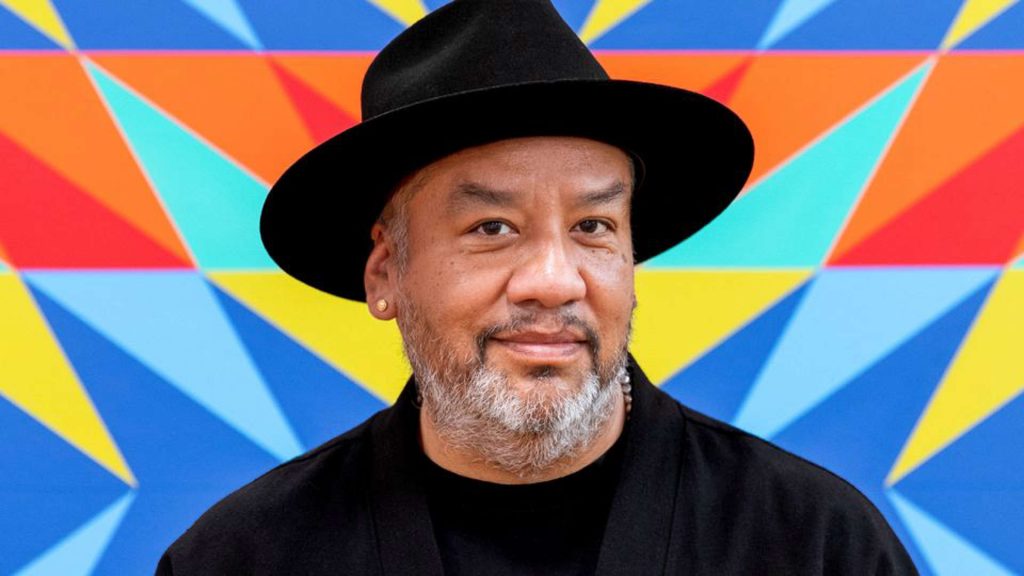
Jeffrey Gibson, the Colorado-born, New York-grounded artist who’s a member of the Mississippi Band of Choctaw Indians and Cherokee descent, will represent the United States at the 2024 Venice Biennale, getting the first Indigenous artist to have a single exhibition in the US Pavilion. Gibson’s work mixes numerous traditions, combining ways from Indigenous beading, weaving, and metalwork and further with the formal language of hard-edged abstract oil, Pop Art form. It spans media similar to form, oil, installation, and performance. He’s maybe best known for suspended punching-bag puppets that incorporate elaborate vestments, circumferences, and rounded textbooks, as well as large-scale oils that feature stylized textbooks rendered in bravely various patterns. For his exhibition in Venice, Gibson will produce installations inside the US Pavilion, on its surface and in its yard, incorporating rudiments of performance and multimedia in addition to static workshops. Through hookups with the Institute of American Indian Trades in Santa Fe, New Mexico, and Bard College in upstate New York, the kiosk will also incorporate educational programming. “The last 15 times of my career have been about turning inward and trying to make commodity I wanted to see in the world,” Gibson, reflecting on his selection for the Biennale, told The New York Times. “Now I want to expand the way people suppose about Indigeneity.” Gibson’s donation in Venice is being commissioned by Kathleen Ash- Milby (Navajo Nation), watchman of Native American art at the Portland Art Museum in Portland, Oregon; Louis Grachos, administrative director of the contemporary art gallery Point Santa Fe; and independent watchman Abigail Winograd. “Throughout his career, Jeffrey has challenged us to look at the world else through his innovative and vibrant work,” Ash- Milby who’s also the first Native Americanco-curator in the 129- time history of the US Pavilion in Venice — said in a statement. “His inclusive and cooperative approach is an important commentary on the influence and continuity of Native American societies within the United States and encyclopedically, making him the ideal representative for the United States at this moment. ” “I’ve long believed in the capability of Jeffrey’s work to be a force for positive change and to produce the possibility of a radically inclusive future,” Winograd added in a statement. “It’s my stopgap that as global followership gets his work through the Biennale, they will also find it to be a source of joy and mending, a commodity plaintively demanded in a world driven by conflict and extremity. ” As is customary, in addition to the Portland Museum of Art in Oregon and SITE Santa Fe in New Mexico, the US Pavilion is being organized in cooperation with the US State Department. Gibson’s work has been displayed extensively throughout the US over the once decade, including in major solo exhibitions at Boston’s Institute of Contemporary Art in 2013 and the Ruth and Elmer Wellin Museum of Art at Hamilton College in Clinton, New York in 2018. His work figured prominently in the 2017 Desert X Biennial and the 2019 Whitney Biennial. Last May, the National Gallery of Art acquired a major piece from Gibson’s “ Garment ” series, a work that incorporates rudiments of Native American caparison as well as references to the late performance artist Leigh Bowery; he’s also represented in the collections of numerous major US galleries including the Buffalo AKG Art Museum, Denver Art Museum, the Crystal Islands Museum of American Art in Bentonville, Arkansas, the Seattle Art Museum and SFMoMa, among others. The US was most lately represented in Venice by Simone Leigh. Her 2022 donation, “Sovereignty,” featured large-scale puppets that “(interrogated) the birth of images and objects from across the African diaspora and their rotation as monuments in service of social narratives,” the exhibition folder explained.